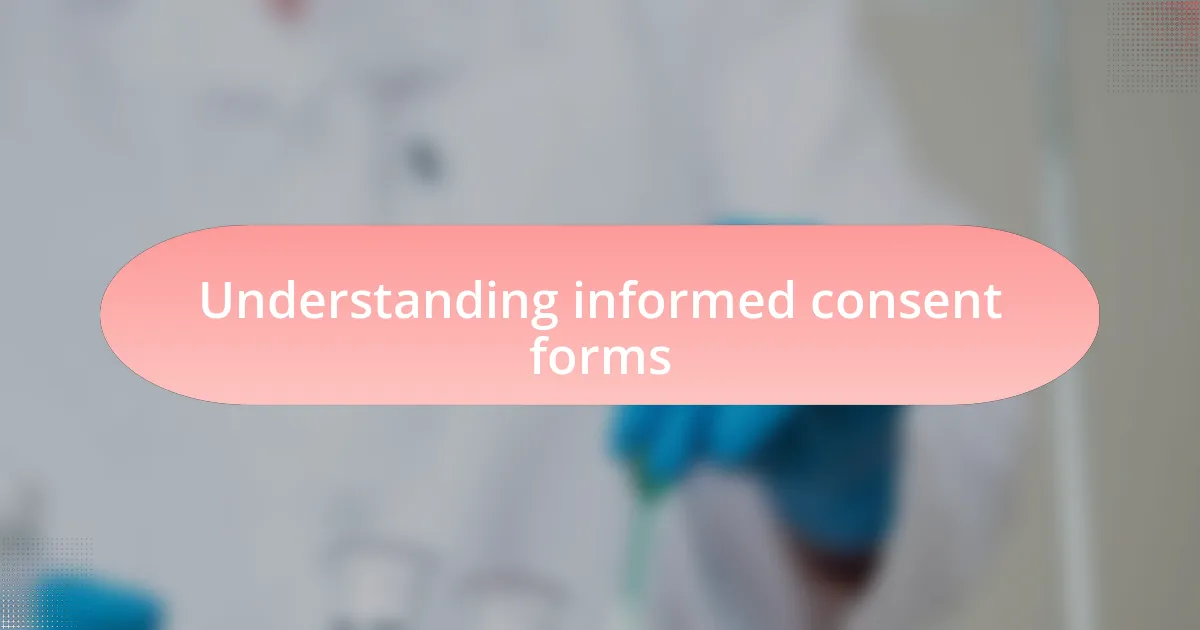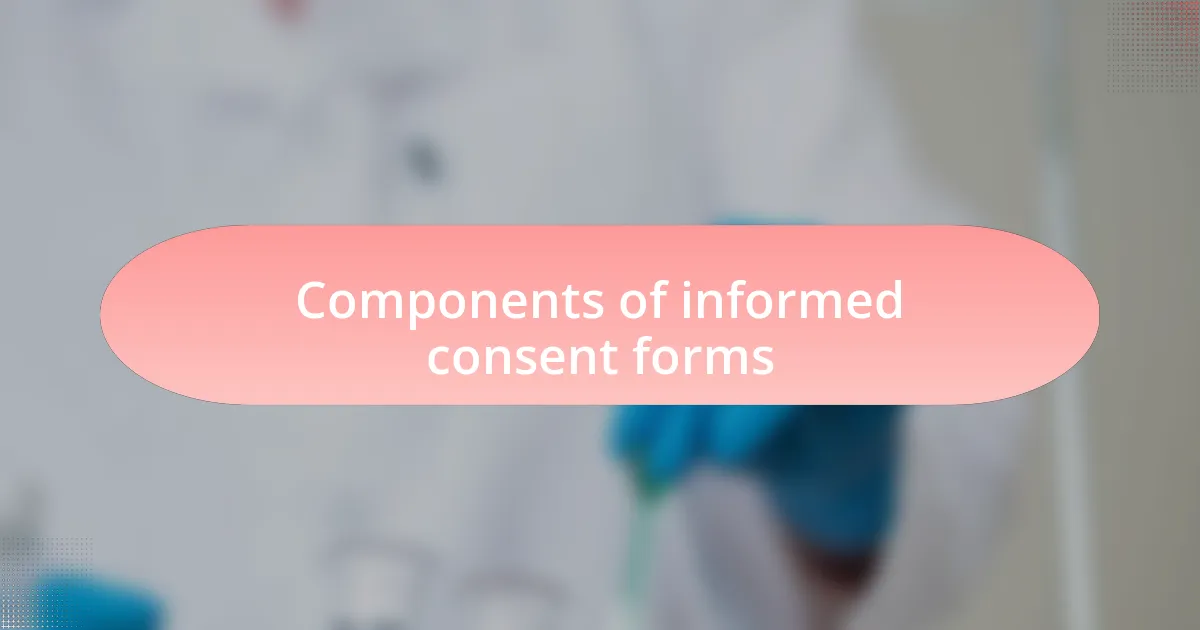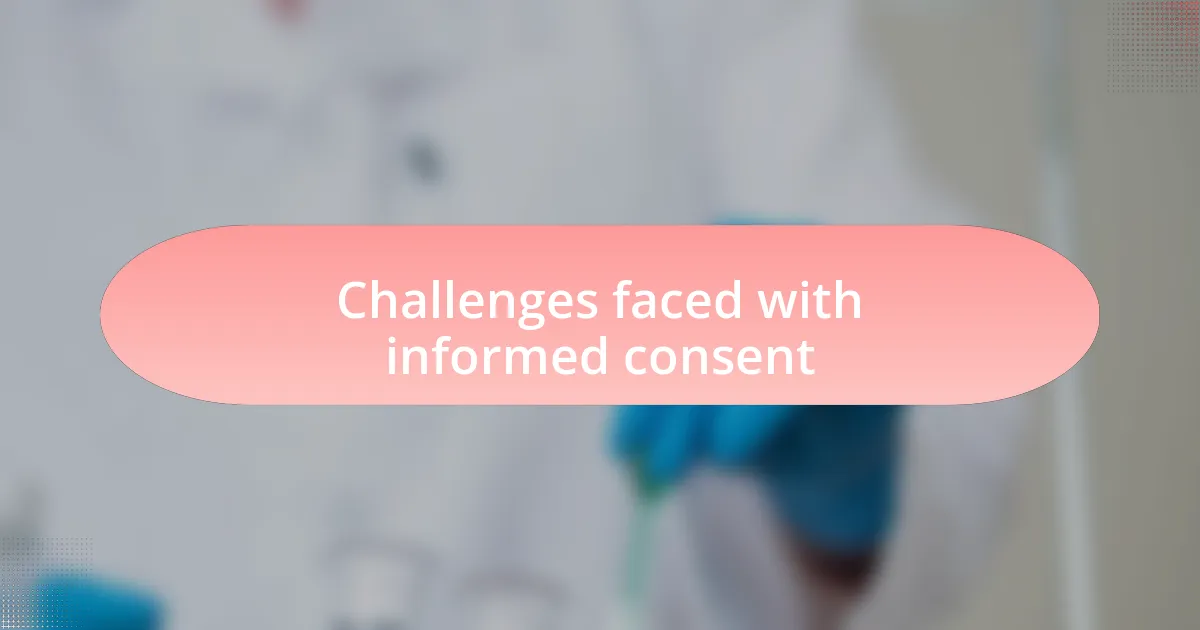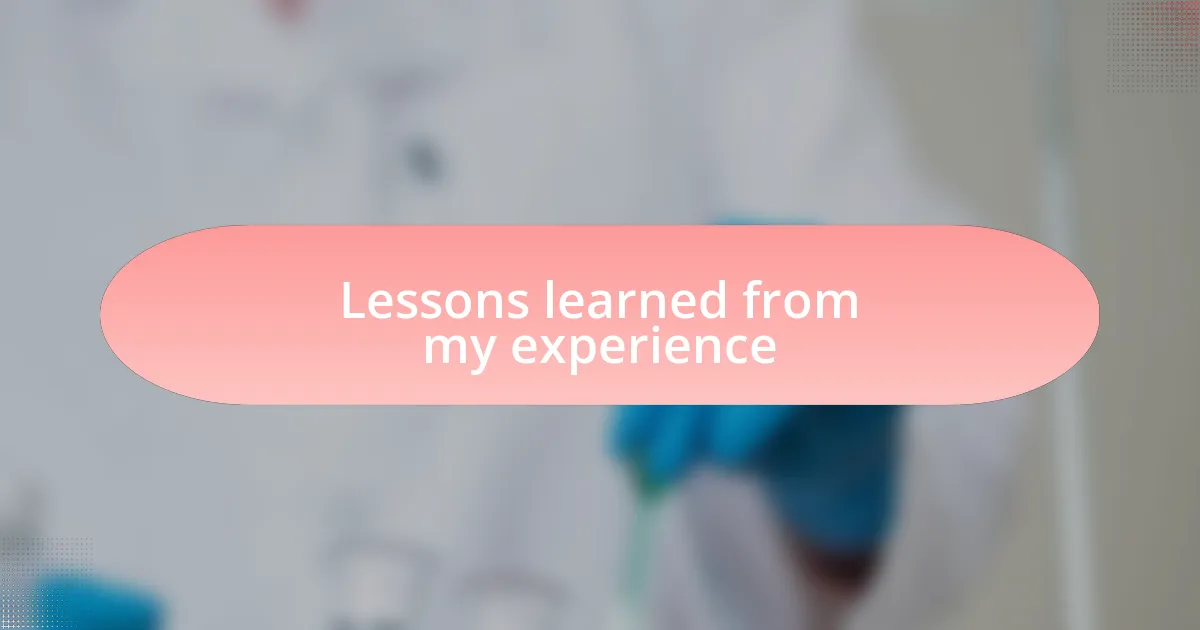Key takeaways:
- Informed consent forms should facilitate a collaborative dialogue between researchers and participants, promoting transparency and trust.
- Key components of consent forms include study objectives, risks and benefits, and confidentiality measures, all of which are crucial for informed participation.
- Challenges such as medical jargon, time pressure, and emotional strain can hinder a participant’s understanding and comfort during the consent process.
- Active participation and asking questions during the consent process empower participants and create a more supportive research environment.

Understanding informed consent forms
Understanding informed consent forms is essential in the medical research landscape. I remember the first time I encountered one; it felt overwhelming. How could a few pages hold such power over my participation in a study that could shape my health outcomes?
These forms detail the study’s purpose, what participation entails, and potential risks. In my experience, taking the time to read and absorb this information is crucial. I once signed a form quickly, only to realize later that I was not fully aware of the risks involved. It made me wonder: how many others gloss over important details?
I find that informed consent should feel collaborative rather than obligatory. It’s a conversation about choices, empowering participants to ask questions and express concerns openly. Reflecting on my experiences, I realize that truly understanding these forms fosters trust between researchers and participants. Isn’t that what we all deserve in medical research?

Components of informed consent forms
When I first dove into informed consent forms, I noticed they typically include several key components such as the study’s objectives, procedures, and timeline. At first glance, these details seem straightforward, but reflecting on my experiences, I realize they hold deeper significance. For instance, I once participated in a trial that promised groundbreaking results in diabetes treatment, but I overlooked the extensive description of the required weekly visits. That missed detail changed my entire schedule and perspective.
Another critical aspect of these forms is the risks and benefits section. It’s essential to have a clear understanding of what could go wrong, as well as what you might gain. I remember feeling a mix of fear and excitement when I read about potential side effects for a study on insomnia medications. There’s something unnerving about knowing the risks, but it’s also reassuring when researchers are transparent enough to lay it all out. Shouldn’t we all appreciate that honesty?
Lastly, consent forms should always feature a section on confidentiality and data protection, addressing how personal information will be handled. I find this component particularly reassuring; knowing that my data isn’t just floating in the ether but is meticulously protected helps me feel more secure in my decisions. Isn’t it comforting to realize that amidst all the uncertainties of participating in research, there are measures in place to safeguard our privacy?

Challenges faced with informed consent
Even with clear protocols in place, one challenge I faced was understanding the medical jargon often present in consent forms. When I encountered terminology like “placebo-controlled” or “double-blind,” I felt lost and overwhelmed. Why should researchers assume we all share the same level of knowledge? It’s critical for them to clarify such terms, helping participants feel informed rather than confused.
Another hurdle I’ve noticed is the time pressure during the consent process. I remember sitting in a sterile room, anxiously glancing at the clock as I tried to digest the thick pile of paperwork before me. It’s easy to feel rushed, which can lead to overlooking vital information. Shouldn’t we be given adequate time to fully understand what we’re consenting to? Just thinking back, I wish someone had walked me through the form rather than leaving it all in my hands.
Lastly, the emotional strain of decision-making can be significant. I recall grappling with doubts as I weighed the risks against the potential benefits of participating in a clinical trial. This internal struggle often feels isolating; you want to trust the research team, but there’s also a nagging fear of the unknown. How can we foster an environment where participants feel supported and empowered to ask questions? It’s essential for researchers to create a welcoming atmosphere, encouraging open dialogue about any concerns.

Lessons learned from my experience
One significant lesson I learned is the importance of asking questions, no matter how trivial they might seem. There was a moment during my consent process when I hesitated to ask about a term I didn’t understand. I still remember the sinking feeling of uncertainty that crept in as I signed the form. If I had only mustered the courage to voice my confusion, I could have left that situation feeling empowered rather than anxious.
I also discovered that being an active participant in the conversation is crucial. Once, I took the initiative to discuss my concerns about potential side effects with the research team. Their willingness to engage in a dialogue not only eased my fears but also highlighted the need for transparency. Isn’t it fascinating how open communication can transform the experience from passive to collaborative?
Lastly, reflecting on my experience, I realize that the informed consent process should never feel like a formality. I once felt like just another signature in a stack of papers, yet I yearned for recognition of my individual concerns. This experience reminded me that participants should be treated as partners in research, deserving of respect and tailored information. How can we reshape this process to truly reflect that idea?